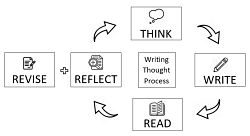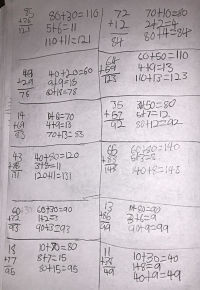Dear families,
We hope you thoroughly enjoyed your Family Day long weekend! I enjoyed a nice dinner with my family and my very first adventure in an escape room. There were many challenging tasks but it was a great way for our family to spend time together working as a team. We had great fun because the puzzles were creative and really made us think critically!
Today, we enjoyed our second session of ice skating. Thanks to our parent volunteers who made it possible. Last week, we had our first session with lessons. The instructors were impressed with our skaters overall saying that they were quick learners. I thoroughly enjoyed sharing a bit of my passion for ringette with interested skaters! I also really enjoyed playing some hockey when one of the students asked me to join their team because they needed some help catching up. Playing hockey was my first ice sport!
 Looking for more opportunities to skate as a family? Last weekend, my family and I thoroughly enjoyed skating together in North Vancouver by the Quay. If you are not aware, they have an outdoor covered skating rink at the Shipyards where you can skate for free (provided you have your own skates). They are open daily from 12 – 7 pm until March 1. On February 24-26, they also have free skate rentals from 5 – 7 pm. Click here to learn more! Feel free to ask me if you have any questions.
Looking for more opportunities to skate as a family? Last weekend, my family and I thoroughly enjoyed skating together in North Vancouver by the Quay. If you are not aware, they have an outdoor covered skating rink at the Shipyards where you can skate for free (provided you have your own skates). They are open daily from 12 – 7 pm until March 1. On February 24-26, they also have free skate rentals from 5 – 7 pm. Click here to learn more! Feel free to ask me if you have any questions.
We are writers and critical thinkers. Last week, I forgot to mention that I tweeted out something I had percolating in my mind about what our brains do and how we think critically as we write:
 Created this graphic to make the writing thought process more explicit. Wanted students to periodically stop and review writing by re-reading and thinking with purpose before writing more. Does it make sense? How can I make my message clearer or writing better? Writing isn’t ever “finished”. Thoughts?
Created this graphic to make the writing thought process more explicit. Wanted students to periodically stop and review writing by re-reading and thinking with purpose before writing more. Does it make sense? How can I make my message clearer or writing better? Writing isn’t ever “finished”. Thoughts?
It is a work in progress. Here is Version 1, which is what I shared with students originally:

So before they write, they think about what they want to write using a variety of pre-writing strategies like talking, drawing, and brainstorming, etc. After they write a bit, if there is a natural pause in their writing or after a few ideas are recorded, they are asked to read over what they wrote so far, asking themselves reflectively, “Does it make sense? How can I make my message clearer?” Then they revise and make changes to improve what they already wrote before going back to thinking about what they want to write next so the cycle begins again. With young writers, I have noticed they often just write and continue writing without reviewing what they already wrote; there is little reflection and revision as they write unless they are encouraged to do so. I truly believe that when writers naturally follow this cycle, what they are trying to communicate becomes more clear and concise. I thought that creating a visual like this infographic makes their thought process as they write more explicit and develops critical thinking skills at the same time.
After some feedback and more thought, here is version 2:

It was interesting to listen to student’s thoughts about it. Since then, it has been great to hear them refer to what their brains should be doing as they think and compose.
 Once they feel their writing is “complete” then they are asked to read it over three times before I conference with them. They are asked, “DYRIO?” = Did You Read It Over? Each time they read it over is with a specific purpose:
Once they feel their writing is “complete” then they are asked to read it over three times before I conference with them. They are asked, “DYRIO?” = Did You Read It Over? Each time they read it over is with a specific purpose:
- Read it like a reader. You are someone else reading it for the first time. Does it make sense?
- Read it again as an editor looking for errors in conventions like capitals, punctuation, and spelling.
- Read it a third time as a revision expert. What words can I change to make my writing sound better? For example, my word choice so instead of saying “eating” I could use “gobbled it up” or if I have used “said” numerous times, I might use “screamed, hollered, yelled, cried” instead or add an adverb phrase like, “she cried with big tears streaming down her face.”
I shared these concepts at one of the sessions where I am teaching other teachers how to use technology to enhance student writing and some informed me that they went back to their classrooms and introduced these concepts to their students the next day! It has been so satisfying to see the improvements in everyone’s writing since the beginning of the year. Communication skills are so important to develop and communicating through writing is just a piece of it.
How you can support at home: When your child writes, encourage them to think critically as a writer: Think. Write. Stop. Read it over. Reflect. Revise before thinking and writing some more.
Please feel free to write a comment to this post to share your thoughts. I know I will continue to tweak this graphic after more feedback and reflection and would love to hear from you. Thank you.
Sincerely, Ms. Chan









